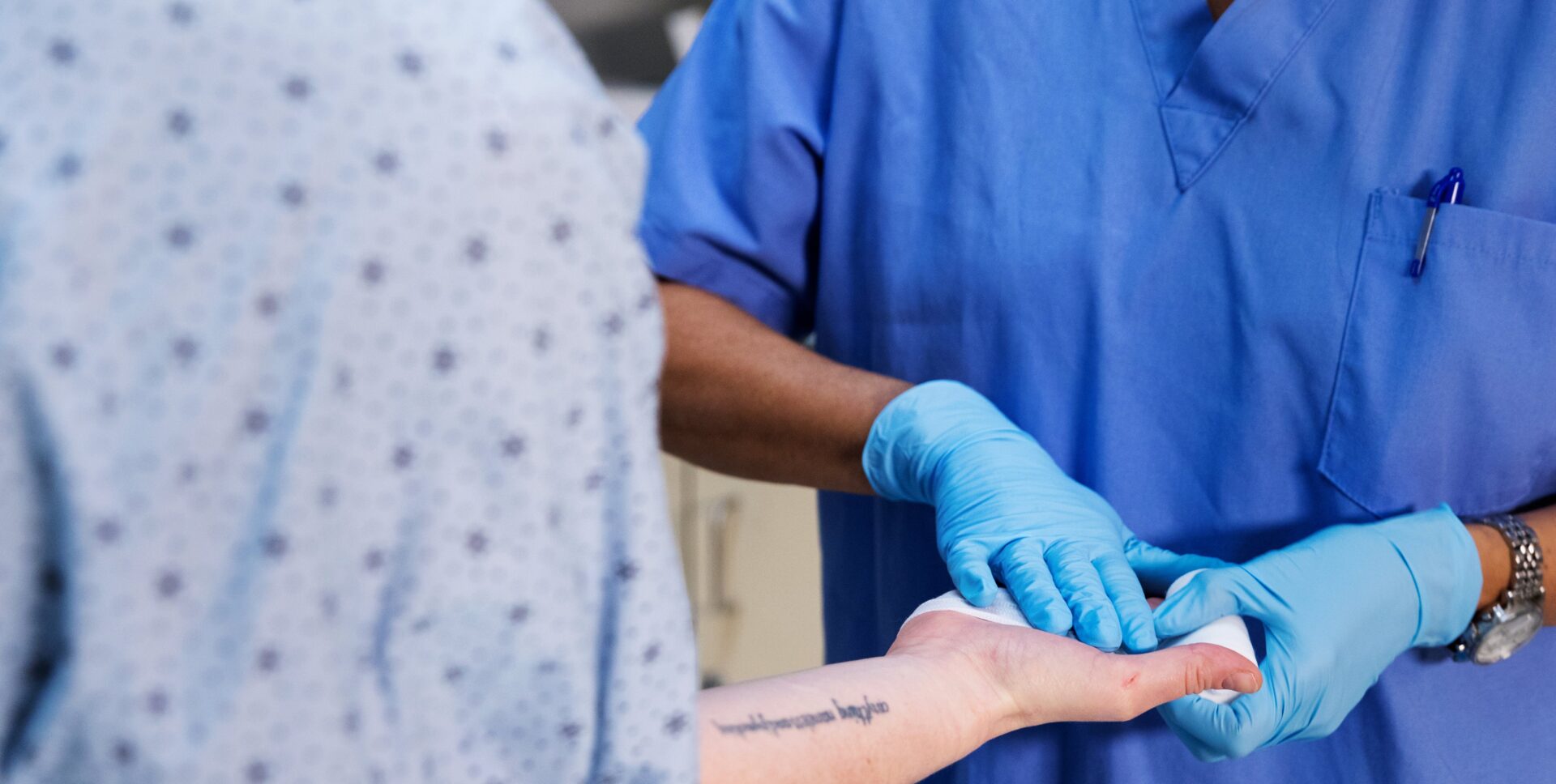When it comes to wound care, there’s a myriad of options available to encourage healing and treat all different types of wounds. The best way to ensure informed decision-making, both for patients and for healthcare providers, is to understand these different options and use that knowledge to discern the optimal route forward. There are several traditional methods and several newer technologies like Wound Vac Therapy (VAC) that can all help in different ways.
Some traditional wound care methods include debridement, dressings, and moisture management.
Debridement involves the removal of dead, damaged, or infected tissue from the area to improve the potential for healing. There are several different techniques that may be employed, including surgical, chemical (using ointment or gel), autolytic (allowing the body’s own enzymes to do the work), or mechanical (physically removing the affected tissue using medical tools).
A second traditional method would be dressings, each type having its own distinct benefits and uses. The main objective of a dressing is to keep infection away, absorb fluids, promote a healthy environment for new connective tissue formation, and, above all, shield the open wound from outside contaminants. Gauze is the most commonly used type of dressing, but other, more effective options include hydrogels, transparent film, hydrocolloids, alginates, and foams.
Lastly, a wound heals best in a moist environment. The science behind this shows that moisture encourages a faster migration of epithelial cells, which are imperative to creating a new layer of healthy skin. It typically takes a combination of both dressings and regular wound cleaning to promote the ideal moisture conditions.
All three of these methods may be used individually or concurrently, and can be a great asset in wound healing.
However, Wound Vac Therapy, or using a VAC, can be a game-changer:
This comparatively recent method uses advanced technology to stimulate quicker wound healing. Essentially, a dressing is placed over a suction pump and tubing, drawing fluids and increasing air pressure on the wound. This can have several positive effects, including an increase in blood flow, a reduction in edema (swelling), an improvement in tissue formation, and a lowered risk of infection:
Depending on the selected approach, the VAC will exert either a constant or cyclical negative pressure, stimulating additional blood flow. Consequently, this means an increase in delivery of nutrients and oxygen to the area, which are both important for healing.
At the same time, the pump will work on removing excess fluid, bringing the swelling down and creating a better environment for wound contracture.
Because the wound is being covered and consistently drained, a wound VAC is able to significantly decrease the risk of outside contamination and minimize the possibility of bacterial presence and infection.
All of these benefits listed above work hand-in-hand to reduce inflammation and encourage growth of granulation tissue.
At the end of the day, it’s all about choosing the right approach:
Knowledge is power and having all of this information is the first step in the right direction. Each patient and each wound has its own unique needs and considerations. Here are some factors to take into account:
- Wound Type: VAC therapy would typically be ideal for chronic wounds that have resisted alternative treatment. Such types of wounds may be diabetic foot ulcers, bedsores (or pressure ulcers), surgical wounds, or wounds with necrotic tissue.
- Wound Severity, Size, and Depth: The full benefits of using a wound VAC may be better demonstrated on large, deep, severe wounds that have arterial insufficiency (insufficient blood flow).
- Overall Patient Health and Condition: The treatment of a wound is only as effective as the overall health of a patient will allow it to be. Patients with certain medical conditions, like bleeding disorders or uncontrolled diabetes, will likely not be good candidates for VAC therapy.
To sum it all up:
Both traditional techniques and the more advanced VAC therapy have an important place when it comes to healing and treating a wound. As always, it is important to speak with a healthcare provider prior to trying any new medical device. Through gaining an understanding of the benefits and drawbacks of each wound care option, patients and medical professionals can work together to decide on the best path to health.

